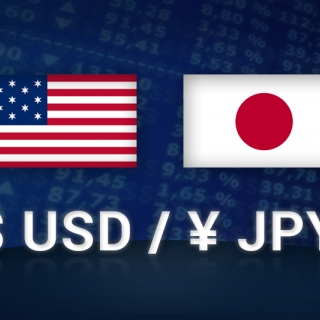


The Japanese Yen (JPY) edges lower during the Asian session on Friday as hopes for the potential de-escalation of the US-China trade standoff remain supportive of a positive risk tone and temper demand for traditional safe-haven assets. Apart from this, a modest US Dollar (USD) uptick assists the USD/JPY pair to climb back above the 143.00 mark and reverse a part of the previous day's pullback from a nearly two-week high.
Meanwhile, government data showed that consumer inflation in Tokyo Japan's capital city accelerated sharply in April and reaffirmed market bets for more interest rate hikes by the Bank of Japan (BoJ). In contrast, Federal Reserve (Fed) officials showed willingness for potential interest rate cuts. This, in turn, might keep a lid on any meaningful upside for the USD and help limit deeper losses for the lower-yielding JPY.
The conflicting statements underscore the uncertainty around the current trade war, which might continue to infuse volatility in the global financial markets and act as a tailwind for safe-haven assets. Furthermore, the prospects for additional interest rate hikes by the Bank of Japan should limit deeper losses for the JPY.
Data released earlier this Friday showed that Tokyo Consumer Price Index (CPI) grew 3.5% year-on-year in April from 2.9% in the prior month. Adding to this, Tokyo core CPI, which excludes volatile fresh food prices, rose 3.4% YoY, or a two-year high, compared to the 3.2% expected and sharply higher than the 2.4% in March.
Furthermore, a gauge that excludes both fresh food and fuel costs and is closely watched by the BoJ rose 3.1% in April from a year earlier after a 2.2% rise in the previous month. This points to broadening inflation in Japan and gives the BoJ headroom to raise interest rates further after a 50 basis point rate hike earlier this year
Source: Fxstreet
USD/JPY pair edges higher to near 150.35, the highest since August 1, during the early Asian session on Tuesday. The Japanese Yen (JPY) weakens against the US Dollar (USD) on political stability conce...
Politics dominated currency markets on Monday as the Japanese yen weakened by the most against the dollar in five months as Sanae Takaichi looked set to become Japan's next prime minister, while the e...
The USD/JPY pair climbs to near 149.65 during the early Asian session on Monday. The Japanese Yen (JPY) faces some selling pressure against the Greenback after a ruling-party vote for Sanae Takaichi t...
The Japanese yen strengthened for the fifth straight day on Thursday, remaining near the two-week high reached the previous day as the US dollar weakened. Markets are increasingly accepting that the B...
The Japanese Yen (JPY) gains traction against the US Dollar (USD) on Tuesday, with USD/JPY extending losses for a third straight day as the looming United States (US) government shutdown weighs on the...
Gold prices (XAU/USD) weakened in Tuesday's trading after a strong rally, dragged down by a strengthening US dollar and rising Treasury yields. Risk-off sentiment began to ease as optimism emerged that US government budget negotiations would soon...
Israeli tanks, ships, and jets pounded parts of Gaza on Tuesday (October 7), offering no respite to Palestinians on the anniversary of the Hamas offensive that led to the two-year war and underscoring the challenges in negotiations over Donald...
Gold (XAU/USD) retreats slightly after touching a fresh all-time high earlier this Tuesday, though any meaningful corrective slide seems elusive amid a supportive fundamental backdrop. The US Dollar (USD) attracts some buyers for the second...
 Asian stocks surged to new highs, led by Japan's Nikkei 225, which surged more than 4% following the election of pro-stimulus lawmaker Sanae...
Asian stocks surged to new highs, led by Japan's Nikkei 225, which surged more than 4% following the election of pro-stimulus lawmaker Sanae...
 The S&P 500 and Nasdaq Composite closed at record highs on Monday, spurred by optimism about increased mergers and acquisitions activity after...
The S&P 500 and Nasdaq Composite closed at record highs on Monday, spurred by optimism about increased mergers and acquisitions activity after...
 Hamas officials were in Egypt on Monday (October 6th) ahead of talks with Israel that the US hopes will lead to an end to the war in Gaza and the...
Hamas officials were in Egypt on Monday (October 6th) ahead of talks with Israel that the US hopes will lead to an end to the war in Gaza and the...
 Euro Area Stock MarketEuropean stocks closed mostly lower on Monday as fresh political turmoil in France rekindled concerns of fiscal instability...
Euro Area Stock MarketEuropean stocks closed mostly lower on Monday as fresh political turmoil in France rekindled concerns of fiscal instability...